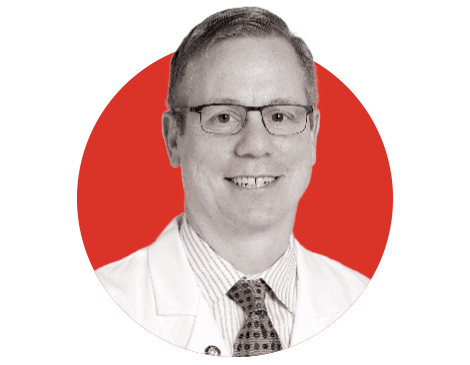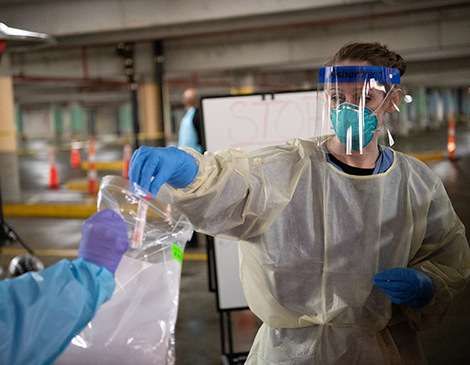Top Doctors: Why Cleveland Clinic Developed Its Own Covid-19 Test
by Lynne Thompson | Dec. 1, 2020 | 12:00 PM

Don Gerda, Cleveland Clinic
The Cleveland Clinic has led the charge on COVID-19 testing as one of the first academic medical centers in the United States to offer it. The institution has completed a whopping 385,000-plus tests as of the beginning of November. And most of the approximately 2,800 people who submit to a nasal swab every day receive their results via testing developed in-house that received FDA emergency use authorization. The nucleic acid-based test looks for the novel coronavirus’ nucleic acids in a nasal mucus sample and is more definitive than the antigen-based test that measures viral proteins. Dr. Brian Rubin, chairman of the clinic’s Robert J. Tomsich Pathology & Laboratory Medicine Institute, talks about the importance of testing and how the hospital is working to make testing readily available to more people.

Q: Why is testing for COVID-19 so important?
A: This disease is very, very recent. Testing has helped us to understand a lot of the biology of this disease — how it’s spread, how communicable it is, who’s getting it, who they give it to. Ultimately, if we can really start knocking down the virus, then we can corner it and eliminate it potentially through tracing. We just haven’t had the resources in the United States to trace as well as we’d like. But we’ll get there.
Q: Who is the clinic testing?
A: We’re testing anybody who is symptomatic. For a while we didn’t test symptomatic patients who were not high risk. With low-risk patients, we just assumed they had COVID. We sent them home. As long as they could stay as outpatients and be safe, we didn’t test some of them. But now we do test all symptomatic patients.

Q: Has the clinic developed any improvements or advances in COVID-19 testing?
A: Traditionally, you get something called a nasopharyngeal swab, which colloquially has almost been called a brain biopsy. You stick it very far up into the nose and twirl it around to get secretions and things up in the nose. That’s actually a little painful. For inpatients, we still swab that way because our workflows are such that we wanted to maintain that. But for outpatients, we realized [swabbing] the front part of your nose — just the outer portions where you would stick a Q-tip or something — is the more comfortable part. You can swab that just as easily and effectively. Now we’ve converted to a self-collection method of nasal swabbing where [outpatients] can actually swab themselves while a caregiver witnesses and watches it. We’re still waiting to submit a collection kit to the FDA, which is a complete self-collection kit. The idea is we distribute these to our pharmacies [where] people can pick them up. We’ll have collection bins at our labs and pharmacies across the Cleveland Clinic system here in Northeast Ohio where they just go back and deposit them. We’ll go and collect them several times a day from those bins, and we’ll bring them back to the lab and test them.
Click here to search the full list of Cleveland’s 962 top physicians in 69 specialties.
Trending
-
1
-
2
-
3
-
4
-
5










